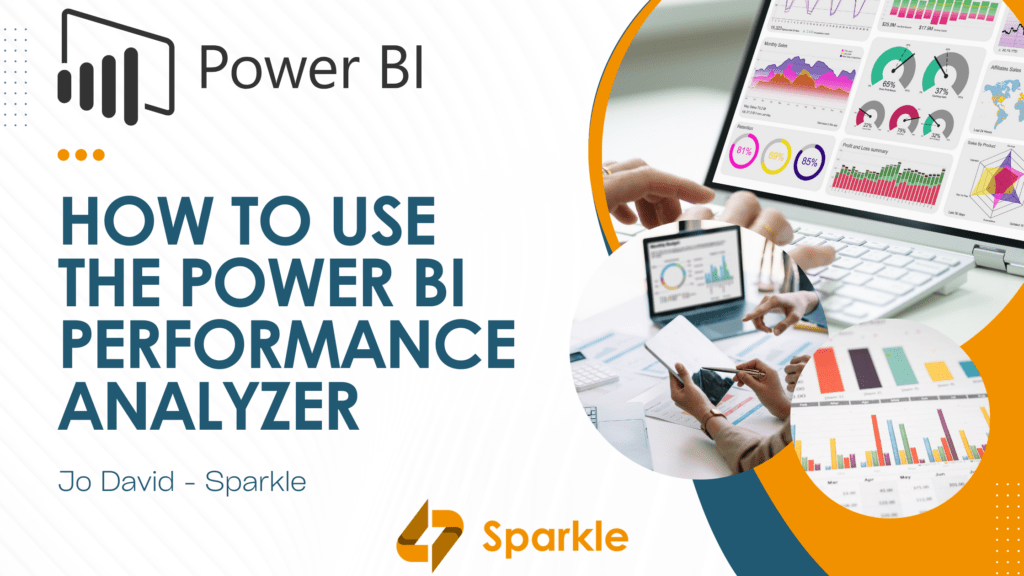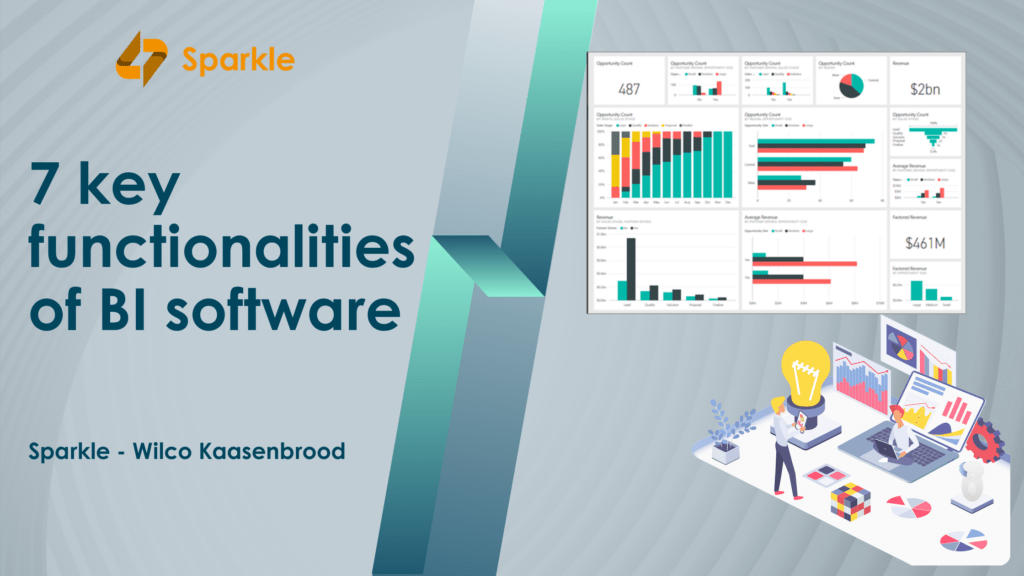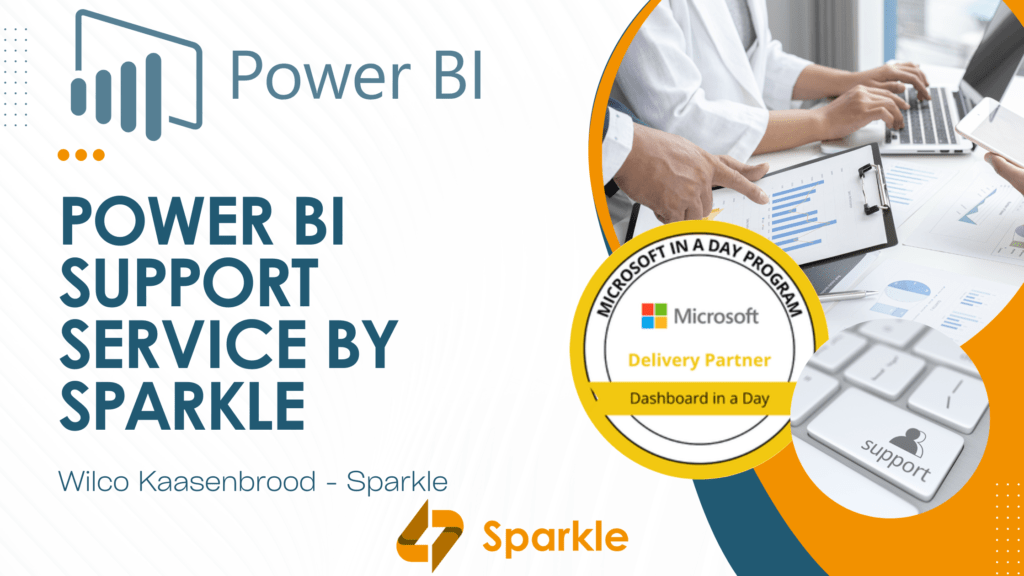Unlocking report performance insights by using PowerBI Performance Analyzer
The PowerBI Performance Analyzer is a powerful built-in tool in PowerBI that is designed to help users to understand, diagnose, analyze, and optimize the performance of their reports and dashboards. It offers valuable insights into various performance-related aspects, such as query execution, data retrieval, visualization rendering, and more.
By identifying bottlenecks and areas for improvement, users can create a smoother and more efficient end-user experience. Ensuring the optimal performance of your Power BI solutions becomes crucial, especially as the volume and complexity of data grows.

What are the benefits of using PowerBI Performance Analyzer? /of/ Why should you use the PowerBI Performance Analyzer?
By identifying and resolving performance issues within PowerBI, you ensure that your reports and dashboards load quickly and respond smoothly, keeping users engaged and satisfied which results in an enhanced user experience.
Performance Analyzer can also help you fine-tune and optimize your data models, ensuring that your data queries and calculations are optimized for faster execution.
By gaining insights in how your reports and dashboards perform, you can make better informed decisions on design, data sources, and optimizations.
Quickly pinpointing performance bottlenecks accelerates the development process and reduces development time, allowing you to iterate and refine your reports more efficiently.
By optimizing your models in the premium capacity, you are reducing how many resources you need and, as a consequence, how quickly you must upgrade your capacity. This naturally results in lower overall costs.
How to Use Power BI Performance Analyzer
Step 1: Accessing Performance Analyzer
- Open the Power BI report or dashboard you want to analyze.
- Navigate to the “View” tab on the Power BI ribbon.
- Click on “Performance Analyzer” in the “Diagnostic” section to launch the tool.

Step 2: Running Performance Analysis
- Once Performance Analyzer is open, click the “Start Recording” button to begin the analysis.
- Interact with your report or dashboard as you normally would to simulate user interactions.
- Click the “Stop Recording” button to end the analysis.

Step 3: Analyzing Performance Data
- The Performance Analyzer window will display a detailed breakdown of the analysis, including data retrieval, visualization rendering, and more.
- Use the “Filter by Event Type” dropdown to focus on specific performance aspects, such as queries, visuals, or filters.
- Pay attention to the “Duration” column to identify bottlenecks – longer durations may indicate areas for optimization.
- The “Other” amount can, but doesn’t have to, indicate that you are using too many visuals on one page. This can add up after a while, as all the visuals need to reload. Hence the high “Other” number.

Step 4: Identifying Bottlenecks and Optimizations
- Review the recorded events and look for patterns or outliers that could be causing performance issues.
- For data retrieval-related issues, which can be found under “DAX query”, consider optimizing queries, transforming data in Power Query, or using query folding.
- For visualization-related issues, which can be found under “Visual Display”, simplify visuals, reduce unnecessary custom visuals, and optimize DAX calculations. You can use the ‘Refresh visuals’ button to force them and see the impact of the reload on your total loading time.
Step 5: Applying Optimizations
- a. Make the necessary changes based on your analysis to improve performance.
- b. Re-run the analysis after implementing optimizations to track improvements.
Ensuring the optimal performance of your Power BI solutions becomes crucial, especially as the volume and complexity of data grows.
Remember that optimizing performance is an iterative process, and regularly using the PowerBI Performance Analyzer can lead to more efficient and impactful reports that provide greater value to your organization. Happy optimizing!
Power Bi Support service
Managing data can be quite challenging, and accuracy of your data cannot be compromised. To help you we have professional Power BI support available in Dutch, English, Estonian & French. View our support formulas and get in contact.
Get in touch with Sparkle’s experts in the field PowerBI, Business Intelligence, data visualization and data storytelling.

Jo David
Power BI Consultant
Discover more content from our blog

Lord of the Rings organization styles for Power BI
Check your Power BI organization according to the world of Tolkien: are you organized like Hobbits, Orcs, Dwarves or Sauron?
This unique approach explained by our Sparkleer Jo uses the legendary journey of Frodo Baggins to guide you through different organizational structures. Discover how to create a harmonious Power BI environment for your business.

Power BI licenses: a quick guide for new users
Sold on Power BI, but do you need licenses? Unlocking the potential of Power BI licenses can feel overwhelming. Our colleague Jo wrote this post to help you navigate the different options and costs.

Power BI versus Microsoft Fabric
Power BI versus Microsoft Fabric: what you need to do with your existing reports and how things change for your organization using MS Fabric. This blogpost includes our “Fabric Analyst in 1 day” workshop as well.

The AI Act in practice: what it means for your business | webinar recording
The AI Act in practice: what it means for your business. In this blogpost you can find the recap of our webinar we hosted together with our legal partner Sorainen and watch the webinar recording.

Future Finance: the link between accountancy programs and Power BI
With Future Finance plugin to power bi we make it easy for business managers and financial advisors to easily create a financial plan. Find out more.

Power BI tips & tricks by Sparkle
In this Power BI Tips & Tricks column we will answer your Power BI related questions. The 1st question was: how can you change your alphabetically sorted data?




